Costume Characters are a great way to promote your business, charity, sports club, products, services, the list is endless. Where there is a mascot there is usually a buzz of excitement, people taking photographs and generally getting giddy about interacting with your oversized ambassador.

This type of live event creates a memorable occasion for those lucky enough to be there and leaves a positive lasting impression that means hopefully, the next time someone requires what you can offer, you’ll be at the forefront of their minds. But what about all those people that can’t get to the event or live in a different country that would love to know more about your services? It would seem a shame to allow your brand ambassador to live only for their events, especially when the modern world is such a small place.
Thanks to the miracles of technology, no longer are your mascots destined only to be local heroes. From the platform of the internet, your character can shoot for the moon and reach the stars; or potential customers, right across the globe with a little bit of creative thinking.
If you haven’t thought about creating a social media page for your character, then now is a good time to start. Facebook is still at the top of the social media pile with over 1 billion views a day and approx. 2 billion unique sessions a month. It’s a medium for exposure that shouldn’t be overlooked and is a great place to start your mascot’s journey into online personable interaction with your audience.
As well as individual profiles, there are also over 60 million ‘Business’ pages that have been created, such as ours, giving you easily accessible information and keeping you up to date with the latest goings on from company HQ. With all the various page types to choose from, this brings us nicely to our first consideration.
Profile vs Pages
 When setting up a page for your character, you’ll be hit with choices right off the bat. The first choice you will have to make is whether you want to create a profile or a page for your mascot. There are differences in the two which will change the way you interact with your audience:
When setting up a page for your character, you’ll be hit with choices right off the bat. The first choice you will have to make is whether you want to create a profile or a page for your mascot. There are differences in the two which will change the way you interact with your audience:
Profile
This is the typical individual profile like the one you would set up for yourself. With a profile page, only those who you invite or accept as a friend will be able to see your content and in a profile, advertising/paid promotion isn’t available. Only one of these pages can be created with one login and password.
Pages
Much more suited to business, pages are a great way to showcase your product, brand, event and you’ve guessed it, mascot. With pages, content is available for everyone to see and instead of inviting friends you invite people to like your page. Pages allow for paid advertising and promotion, so once you’re all set up and happy with the details you can start to put some premium promotion behind your character should you so choose.
 Because the Character you want to be promoting is your brand ambassador, I would suggest choosing to create a Page rather than a profile as this will give you the most amount of flexibility with your account.
Because the Character you want to be promoting is your brand ambassador, I would suggest choosing to create a Page rather than a profile as this will give you the most amount of flexibility with your account.
What type of page should I use?
Once you have made your decision to start and have clicked the pages button, you will be presented with a list of options as to what you would like your page to be. There are 6 options to choose from, but only one that I would recommend for your brand ambassador:
Artist, Band or Public figure – Used to be called a fan page back in the day, this would be the right  choice for a fully dedicated page all about your mascot. With this category, you can be a little more personable with the tone of your message as people will be interacting with a character that has its own personality, opinions etc. without the usual corporate undertones you would expect on a dedicated business page. The idea is to build brand association between your products/services and your mascot. People are much better at remembering faces than they are business names so it’s a great way to keep at the forefront of your potential customer’s mind.
choice for a fully dedicated page all about your mascot. With this category, you can be a little more personable with the tone of your message as people will be interacting with a character that has its own personality, opinions etc. without the usual corporate undertones you would expect on a dedicated business page. The idea is to build brand association between your products/services and your mascot. People are much better at remembering faces than they are business names so it’s a great way to keep at the forefront of your potential customer’s mind.
If you find that you have chosen a type of page that on reflection isn’t suited to your character, you can always go into your settings to change the page type later.
What next?
So now you’ve made your decision and you are ready to start building the content for your mascot showcase; what kind of information do you need to create a successful page? Below I’ll discuss 5 important points to consider when constructing your character profile.
Back story
 Everyone has a back story; a place of origin, likes and dislikes, annoying character traits (we all have them) and a distinct personality. It’s what makes us all so unique and if it wasn’t for these differences, the world would be such a boring place. Real or fictional, a back story is a great way to bring your character to life.
Everyone has a back story; a place of origin, likes and dislikes, annoying character traits (we all have them) and a distinct personality. It’s what makes us all so unique and if it wasn’t for these differences, the world would be such a boring place. Real or fictional, a back story is a great way to bring your character to life.
When thinking about your character’s back story, think about where they were born, where they grew up, if they have any family, a romantic interest, favourite hobby, funny story surrounding a calamitous event, how they came to your employment, it can be as elaborate as you want it to be! The aim is to make your mascot more relatable by giving it a history and turning it into a ‘real’ character. If people grow an affinity towards your mascot then there’s a good chance they’ll come to you next time they need your services.
Photos and videos
Essential to any social media page, photos and videos are what your potential  clients will interact with most often. These tend to stand out against status updates, post links, and text-based content because our brains can process imagery faster than it can decipher the text.
clients will interact with most often. These tend to stand out against status updates, post links, and text-based content because our brains can process imagery faster than it can decipher the text.
Over 90% of human interaction is visual so it makes sense to follow this thinking when it comes to social media. Think about the kind of things you look at on social media. I’m guessing that most of the memorable posts you have engaged with recently contain either photos, videos or cats…. far more cats than you would want to admit to but probably in one of the two formats discussed. So logically, the answer is to get a cat mascot costume and to take lots of photos of it.
I jest but having some great promo shots of your character and making sure you travel with a camera to all events will ensure you get some fantastic and interesting snaps to share with your fans, who in turn will share with their friends, and the chain grows longer, expanding your reach far beyond the physical boundaries of a local event.
Other content
Once your character page is up and running; you’ve fabricated your biography and have taken lots of great photos of your mascot, it’s time to start looking at building and planning regular content to keep your potential customers engaged.
Whether it be linking through to an interesting article or playing fill in the blanks, content should be varied and promote interaction between your Brand Ambassador and your page fans. A great tip is to have a look at your potential customer base and to do a bit of research to see what matters to them and what they generally find interesting. If you can tap into this when looking at content for your page, you will find the interaction levels increase when a fan is genuinely interested in a topic.
It’s well known that the hard sell isn’t an effective method when it comes to Facebook, so even though your customer is potentially interested in your product, a direct sales message (unless heavily promoting a significant discount) will be skipped past by most people, so keep it light-hearted.
Another great way to engage fans is to pose questions. Think about finishing off some of your posts with a discussion point or ask for an opinion. We all like to give our 2 cents worth and if it’s a topic close to your customers’ hearts, not only will you get the opportunity to engage, but you’ll also learn some valuable insights into their likes/dislikes so you can further tailor your offer or content down the line.
Competitions can also get your fans engaging with your content. Something like a caption contest or a small sweepstake is all that is needed to start the likes and shares flowing, creating a buzz around your character and their page.
It’s important to remember that the prize on offer should reflect the amount of effort required to enter the competition. If it’s a big prize, then make your fans work a little harder for it by submitting an entry. If it’s information you are after, keep the prize small and make it a simple comment below type of contest. A competition is a great way to gain valuable information and stats from your customers that can be used later. For example, to enter a sweepstake, fans may have to like and share the post and then tell you what their favourite flavour of ice cream is in the comments below. This information could allow you to introduce a new flavour down the line that you know will be a popular choice because you’ve heard it right from the horse’s mouth.
With all content, it is important to remember to promote the core values of your company in the way you present, write and perform with your character both online and offline. If your character is about promoting healthy living, then try not to offer unhealthy prizes, or give information contradicting the beliefs of the company. This can lead to you sending a confusing message to your customers that can de-value the hard work you have put in to building your brand.
Above all, keep your content interesting. It’s better to have 2-3 relevant and engaging posts a week than to fill up your wall with low-quality daily content for the sake of posting.
Account linking

Account Linking is the act of joining two or more social media platforms so that if you post on one, it automatically posts on the other and vice versa. This may sound like a great idea at first; meaning that you can reach out to all your networks in one go but people use Facebook and Twitter (which we’ll use for this example) in very different ways. For example, Twitter posts are limited to a set number of characters (140 characters, not including Twitter handles – the @username) whereas Facebook will allow up to 5000 characters per comment or status update, allowing for longer posts and in-depth discussion right on the site.
Sharing your Facebook update with Twitter can end up cutting out a lot of the comment and can leave your Twitter account looking messy with lots of seemingly unfinished comments. There’s also the issue around replying to fans and potential customers. When linking, there are no notifications that let you know when someone has replied or commented on a thread via the other platform, so unless you log in regularly to either account, your Character might unintentionally ignore your customer base who may search elsewhere.
The best advice I can give you on this is to start with one platform, and only open your character up to more social media avenues when you feel ready to handle them individually. Products like Hootsuite enable you to choose which posts go to which social site, so if you do feel the content is relevant on both, you get the option to share it.
Invitation and promotion
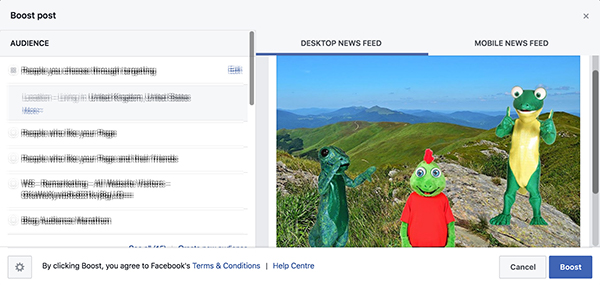 To get your page started, there are two ways to gain a following. One is through invitations, and the other method is through sponsored advertising.
To get your page started, there are two ways to gain a following. One is through invitations, and the other method is through sponsored advertising.
Facebook offers several paid avenues to promote your character’s page, ranging from boosting posts to advertising in your local area. Both are relevant but depending on your end goals, these promotions can work out quite costly. The trick is to fine tune your advert audience interests to only include relevant topics and hobbies to ensure you maximise the spend.
Inviting people to like your page, on the other hand, is free but you can only invite people you either already know personally or have the email address for, which you can upload to Facebook so that it can send out the invites. Some people are happy to receive invites to their inbox, others can be a little wary as they can feel a little impersonal.
Wrapping up
You’ll hopefully find that if you follow our guidelines and post regular and relevant content a few times a week, your fan base should start to grow and your mascot will become more recognisable across the globe and not just locally. The information above should get you started but don’t be afraid of trying new things as audience interaction is always evolving, especially in the fast-paced field of social media.
If I can leave you with one thing from this article to ensure a successful character page, it should be this short and simple message:
Don’t Market, Connect.
If you feel you need any help or advice on how to set up your costumed character’s page or just want a chat about creating your brand ambassador then send us a message via this form.




 When you create, manage and grow a business, the last thing you think about is your exit strategy, and this for me has been one of the most difficult challenges.
When you create, manage and grow a business, the last thing you think about is your exit strategy, and this for me has been one of the most difficult challenges. Costumes With Character EOT Management team: Debbie Aylward, Alison Hilton, Marie Harrison, Amanda Pritchard, Michelle Barton and Clare Kinross
Costumes With Character EOT Management team: Debbie Aylward, Alison Hilton, Marie Harrison, Amanda Pritchard, Michelle Barton and Clare Kinross
 Costumes with Character EOT Trustees L-R: Alison Dermott, Liz Milnes, Emma Stanton
Costumes with Character EOT Trustees L-R: Alison Dermott, Liz Milnes, Emma Stanton




 Call us on
Call us on 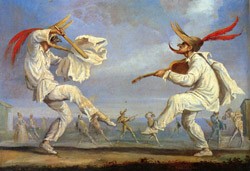 Many people will be surprised to learn that pantomime didn’t originate in the UK and holds many of its roots in a style of classical theatre called Commedia Dell ‘Arte, popular in Italy throughout the 16th and 17th Centuries. This style of sketch based theatre brought about the notion of ‘stock’ characters. Stock characters were made to represent stereotypical social types, such as the servant, the clown and the lovers to name a few.
Many people will be surprised to learn that pantomime didn’t originate in the UK and holds many of its roots in a style of classical theatre called Commedia Dell ‘Arte, popular in Italy throughout the 16th and 17th Centuries. This style of sketch based theatre brought about the notion of ‘stock’ characters. Stock characters were made to represent stereotypical social types, such as the servant, the clown and the lovers to name a few. Be it Daisy the Cow in Jack and the Beanstalk, Tom the Cat in Dick Whittington or Mother Goose’s Fowl. The role of the animal companion in pantomime has long since been a staple part of the performance. Skilled animal actors would don the costume (often in pairs for front and back legs) and perform alongside the high-profile actors of the day, wowing audiences into believing they were the real thing… with a little bit of imagination of course. Here at CWC we have made many pantomime and theatre animals from cows to kangaroos and horses. Interestingly, when one thinks of pantomime animals, cows and horses come to the forefront of the mind. However, horses are relatively rare in panto performance and feature far less than cows, cats and geese.
Be it Daisy the Cow in Jack and the Beanstalk, Tom the Cat in Dick Whittington or Mother Goose’s Fowl. The role of the animal companion in pantomime has long since been a staple part of the performance. Skilled animal actors would don the costume (often in pairs for front and back legs) and perform alongside the high-profile actors of the day, wowing audiences into believing they were the real thing… with a little bit of imagination of course. Here at CWC we have made many pantomime and theatre animals from cows to kangaroos and horses. Interestingly, when one thinks of pantomime animals, cows and horses come to the forefront of the mind. However, horses are relatively rare in panto performance and feature far less than cows, cats and geese.
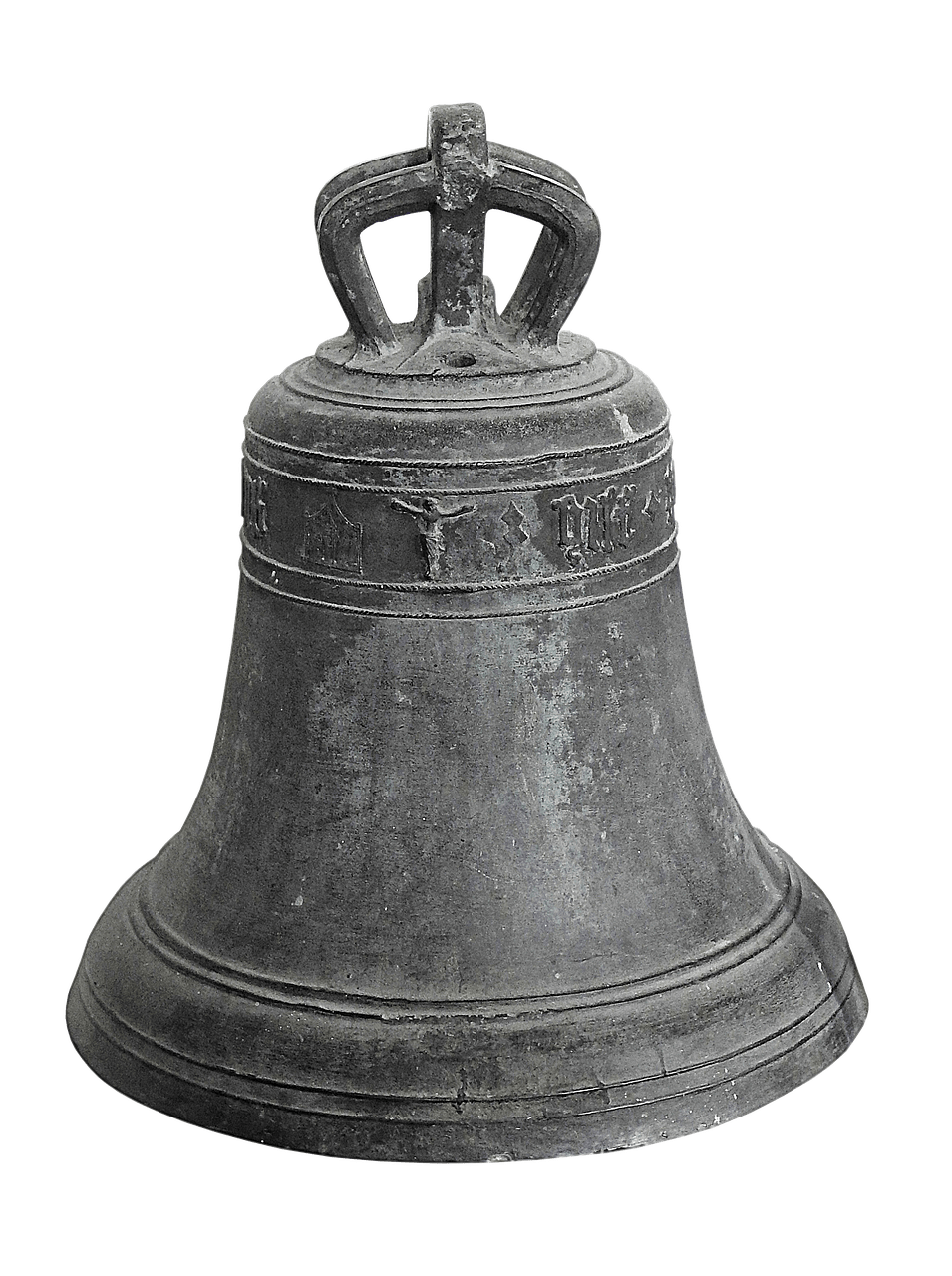 While not a creature or a critter, bells are hugely symbolic in France at Easter time– it’s thought that all the church bells across the land spring from their towers and fly to Rome, where they not only rub shoulders with the Pope, but also make sure they load up on traditional Easter sweets and goodies to share back home. Keep an eye on any church bells you might spy the next time you’re France-bound – they’re all hiding secret pairs of wings!
While not a creature or a critter, bells are hugely symbolic in France at Easter time– it’s thought that all the church bells across the land spring from their towers and fly to Rome, where they not only rub shoulders with the Pope, but also make sure they load up on traditional Easter sweets and goodies to share back home. Keep an eye on any church bells you might spy the next time you’re France-bound – they’re all hiding secret pairs of wings!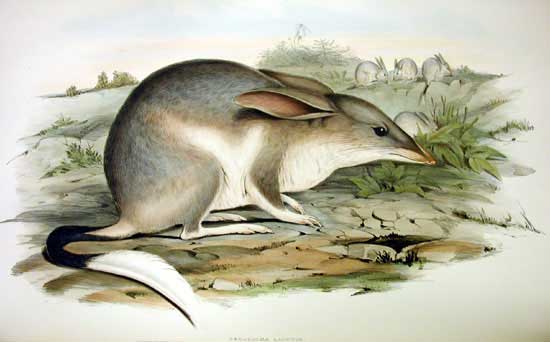
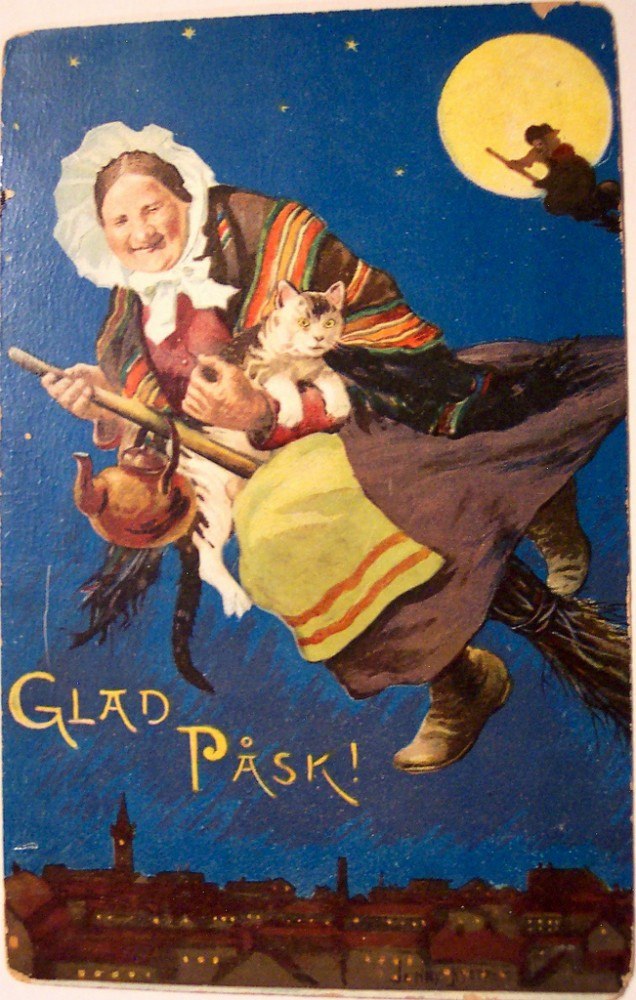 If you thought witches hid away until Halloween each year, you’ve clearly never made your way to mainland Europe during the spring! Easter Witches are commonly found across Sweden and Finland – in the form of children dressing up and gifting handmade postcards/drawing to their neighbours. In return, the children receive a few pennies or Easter sweets for their efforts. Sounds fairly similar to trick-or-treating in the US – but beyond this, it’s not uncommon to see images of witches riding broomsticks and carrying a cauldron of goodies around Easter time in Scandinavia.
If you thought witches hid away until Halloween each year, you’ve clearly never made your way to mainland Europe during the spring! Easter Witches are commonly found across Sweden and Finland – in the form of children dressing up and gifting handmade postcards/drawing to their neighbours. In return, the children receive a few pennies or Easter sweets for their efforts. Sounds fairly similar to trick-or-treating in the US – but beyond this, it’s not uncommon to see images of witches riding broomsticks and carrying a cauldron of goodies around Easter time in Scandinavia.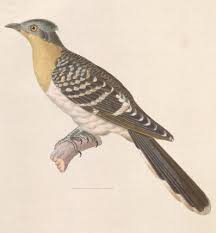 When you think of cuckoos, you generally think of those odd little clocks – and where do they come from? Switzerland! The Swiss really take cuckoos to heart around Easter, too – as their traditional egg-carrier is not a rabbit but a native bird. The Easter Cuckoo is brightly coloured and high-spirited, and particularly lucky children may even be able to snatch a few chocolate cuckoos of their own!
When you think of cuckoos, you generally think of those odd little clocks – and where do they come from? Switzerland! The Swiss really take cuckoos to heart around Easter, too – as their traditional egg-carrier is not a rabbit but a native bird. The Easter Cuckoo is brightly coloured and high-spirited, and particularly lucky children may even be able to snatch a few chocolate cuckoos of their own!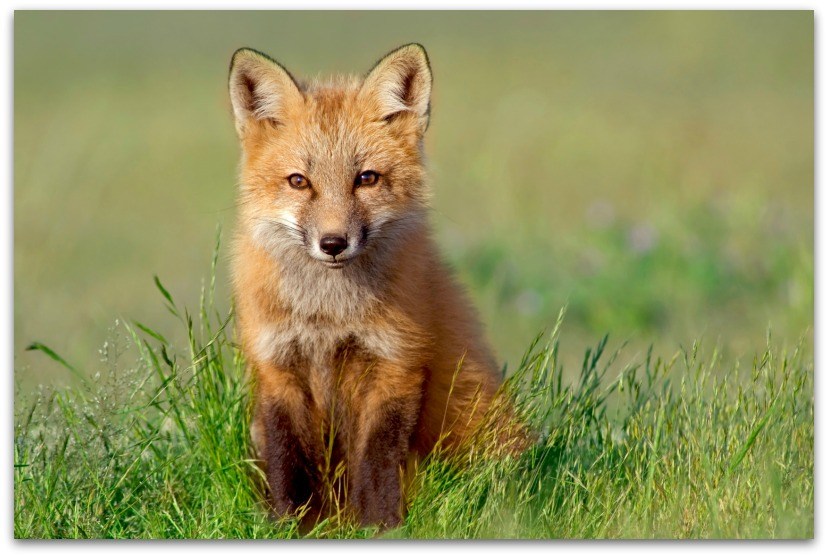 Who would have thought that the bunny’s natural foe – the fox – would be the one delivering the treats and the goodies out in mainland Europe? Germany is another country rich in curious heritage, and it’s thought that both the Germans and the Dutch helped to spread the tradition of the Easter Bunny across the West. The Easter Fox is perhaps less common these days as the Bunny has largely taken centre stage, but it’s nice to see that he still has a role in some parts of Germany!
Who would have thought that the bunny’s natural foe – the fox – would be the one delivering the treats and the goodies out in mainland Europe? Germany is another country rich in curious heritage, and it’s thought that both the Germans and the Dutch helped to spread the tradition of the Easter Bunny across the West. The Easter Fox is perhaps less common these days as the Bunny has largely taken centre stage, but it’s nice to see that he still has a role in some parts of Germany!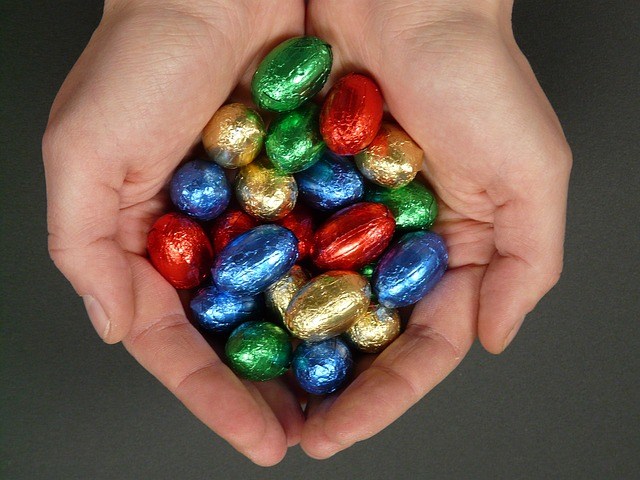
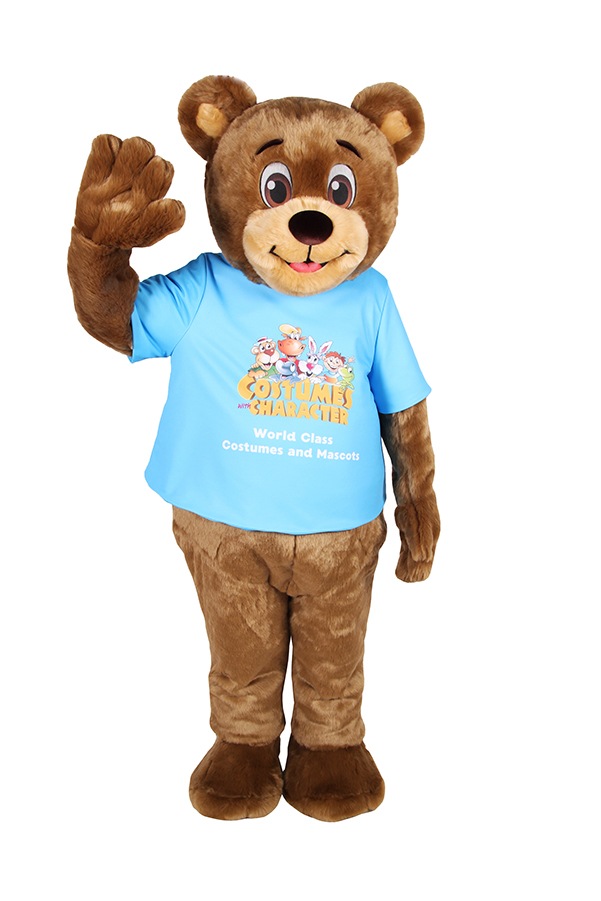 Big, boisterous and cuddly, these family favourites are great for anyone looking to offer the crowds a big soft cuddle or two. Bears are of course already famous with young children thanks to the universal appeal of teddies. Bears are famously family animals – warm, fuzzy and the image of many a children’s toy, our mascot characters are life-size teddies built for any occasion – and while we’d certainly never advise approaching a real bear in person, always give our bear mascots a big old hug whenever you see them!
Big, boisterous and cuddly, these family favourites are great for anyone looking to offer the crowds a big soft cuddle or two. Bears are of course already famous with young children thanks to the universal appeal of teddies. Bears are famously family animals – warm, fuzzy and the image of many a children’s toy, our mascot characters are life-size teddies built for any occasion – and while we’d certainly never advise approaching a real bear in person, always give our bear mascots a big old hug whenever you see them!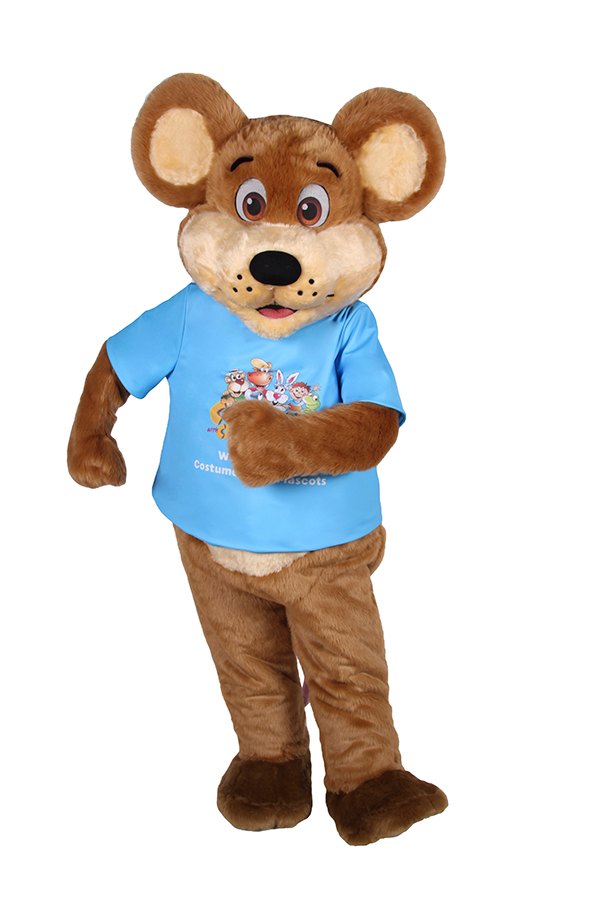 Often thought to be quiet, mischievous creatures that are rarely seen but are often heard, our mouse mascots are large and in charge – and will never scurry away from a crowd! Cheeky, nibbling characters make for fantastic family entertainment. Among all of our popular animal characters and mascots, mice are some of the most characterful. The right design and the right performance can bring a mischief-making nibbler come to life. Paired up with a cat mascot, you’re guaranteed some fun – but mice are worth their weight in cheese with or without a chase!
Often thought to be quiet, mischievous creatures that are rarely seen but are often heard, our mouse mascots are large and in charge – and will never scurry away from a crowd! Cheeky, nibbling characters make for fantastic family entertainment. Among all of our popular animal characters and mascots, mice are some of the most characterful. The right design and the right performance can bring a mischief-making nibbler come to life. Paired up with a cat mascot, you’re guaranteed some fun – but mice are worth their weight in cheese with or without a chase!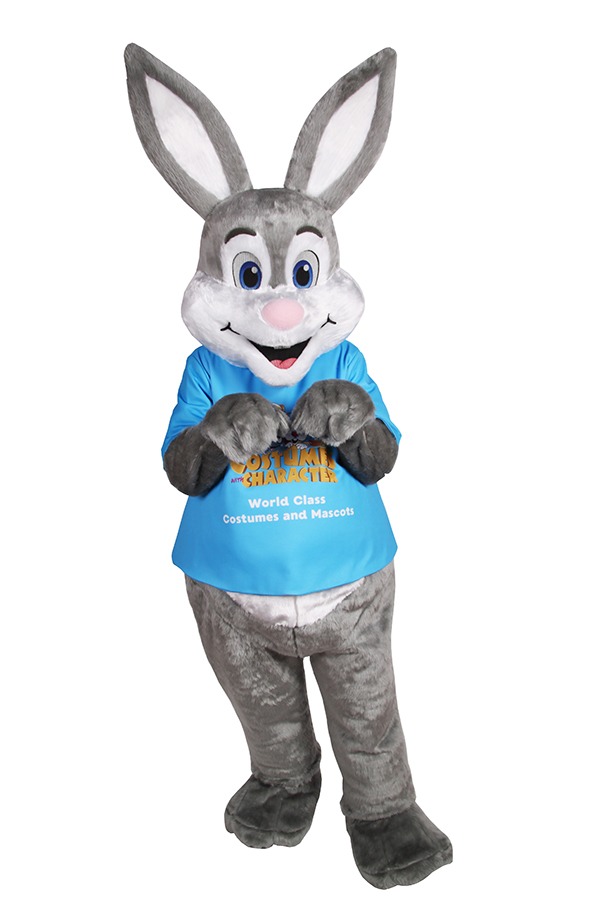 Rabbits are iconic – Bugs Bunny, the White Rabbit, a certain bunny advertising chocolate milk drinks – they’re everywhere in the world of mascots. Bunnies and rabbits are bouncy, fun-loving, free-spirited and best of all, absolutely barmy! This makes them the perfect fit and addition to any family event, particularly when kids are involved – you never know quite what you’re going to get from a rabbit character, meaning that safe, quirky fun is always guaranteed. You’ll find a rabbit mascot’s energy infectious – and even better, they can be themed to attend Easter events and more.
Rabbits are iconic – Bugs Bunny, the White Rabbit, a certain bunny advertising chocolate milk drinks – they’re everywhere in the world of mascots. Bunnies and rabbits are bouncy, fun-loving, free-spirited and best of all, absolutely barmy! This makes them the perfect fit and addition to any family event, particularly when kids are involved – you never know quite what you’re going to get from a rabbit character, meaning that safe, quirky fun is always guaranteed. You’ll find a rabbit mascot’s energy infectious – and even better, they can be themed to attend Easter events and more.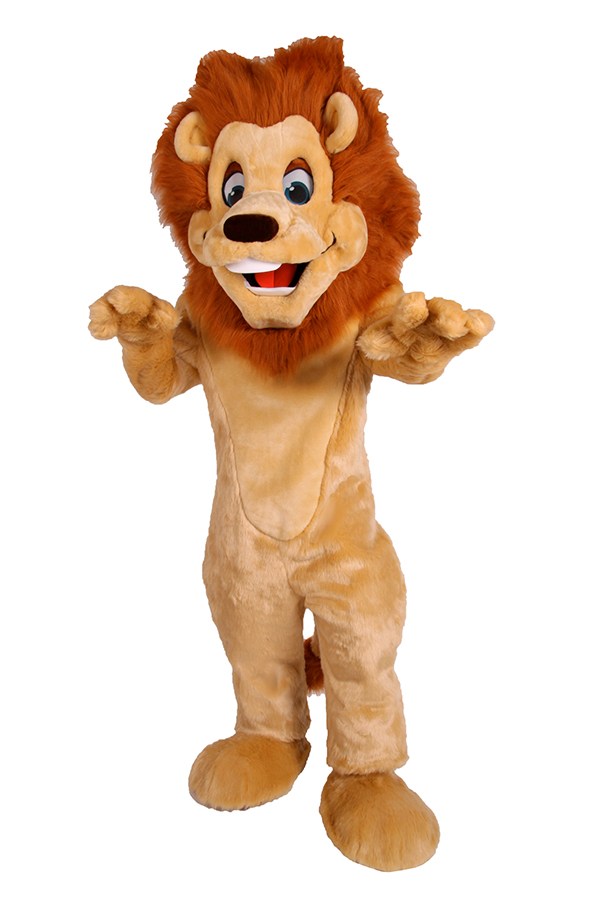 The king of the jungle – fierce, imposing, regal and awe-inspiring, the lion is another family animal that may be dangerous in the wild but a big old softie on the mascot scene. Lions are famously used to represent sports teams and are considered symbols to look up to. What’s more, they really are a sight to see! Lions come in all shapes and sizes, but a mascot with full mane and all the regal glamour will add a touch of class and fun to any event – an absolute must for sports days and events.
The king of the jungle – fierce, imposing, regal and awe-inspiring, the lion is another family animal that may be dangerous in the wild but a big old softie on the mascot scene. Lions are famously used to represent sports teams and are considered symbols to look up to. What’s more, they really are a sight to see! Lions come in all shapes and sizes, but a mascot with full mane and all the regal glamour will add a touch of class and fun to any event – an absolute must for sports days and events.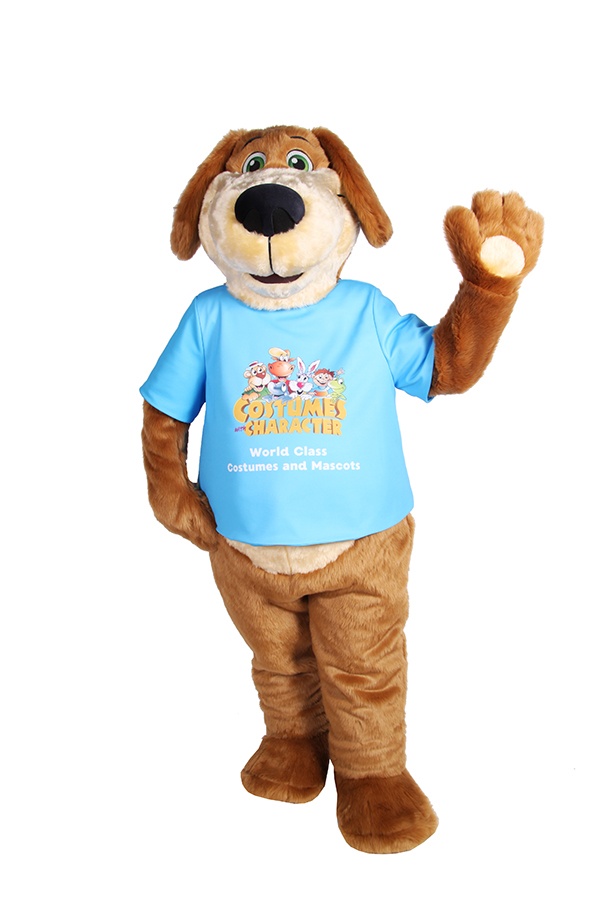 Dogs are loveable, big or small – and with so many breeds to pick from, there’s little wonder that so many of us welcome those happy, wagging fuzzballs into our homes. As far as mascot characters go, dogs are happy-go-lucky, playful and always eager to please! Anyone playing a dog character will really get their teeth into the role. Playing games, chasing their tail and more besides. They may be goofy, but they’re loyal, they’re happy and they’re fun – a great fit for any event, and one you may want to consider above the rest of our curious critters!
Dogs are loveable, big or small – and with so many breeds to pick from, there’s little wonder that so many of us welcome those happy, wagging fuzzballs into our homes. As far as mascot characters go, dogs are happy-go-lucky, playful and always eager to please! Anyone playing a dog character will really get their teeth into the role. Playing games, chasing their tail and more besides. They may be goofy, but they’re loyal, they’re happy and they’re fun – a great fit for any event, and one you may want to consider above the rest of our curious critters!
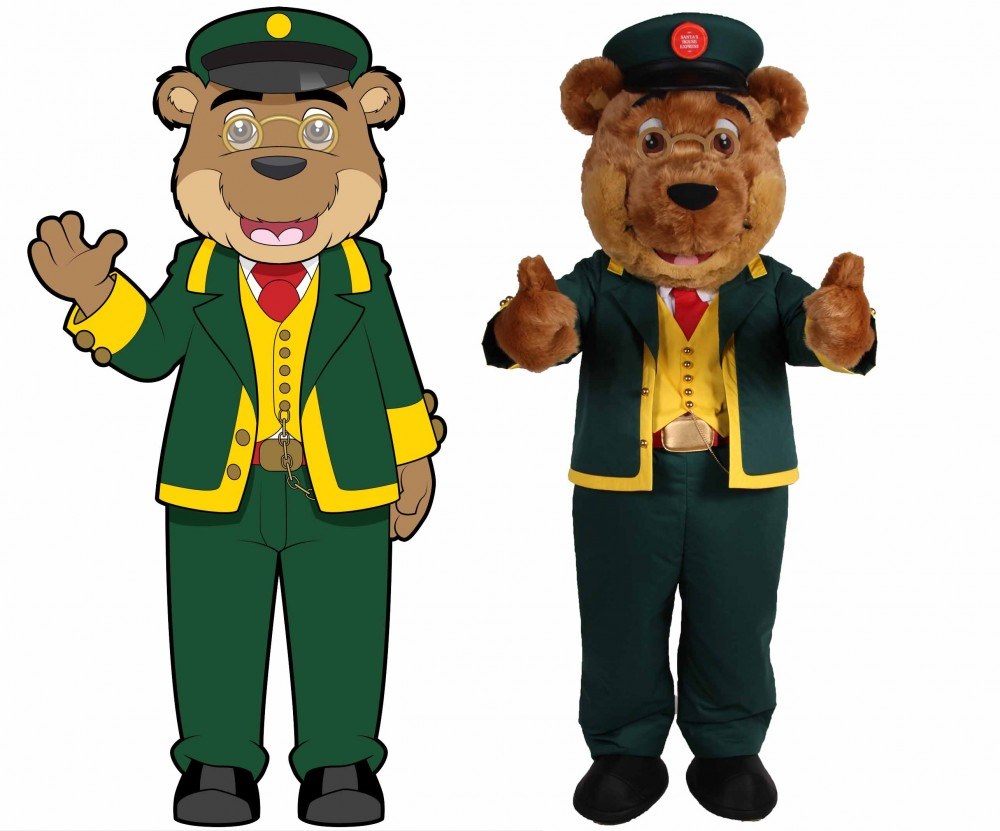

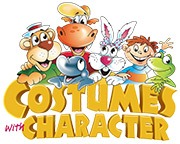 Costumes with Character has been trading since 1986. In that time we’ve helped to create some truly spectacular mascot costumes for a wide variety of clients. We’ve helped to design and build unique outfits and cheeky characters to help entertain at events, and we’ve been the approved maker for many well-known licensed characters and brands over the years.
Costumes with Character has been trading since 1986. In that time we’ve helped to create some truly spectacular mascot costumes for a wide variety of clients. We’ve helped to design and build unique outfits and cheeky characters to help entertain at events, and we’ve been the approved maker for many well-known licensed characters and brands over the years.
 Printing – Once you have finalised your design, it will need to be uploaded into the dedicated software on your computer to be processed. RIP software (stands for Raster Image Processing) is effectively an advanced printer driver designed to get optimal results from your machine. From within you can edit the image, resize and format it to the desired profile for your printer. The RIP software stores all the colour profiles required to faithfully recreate the original design. Once your design is ready to print, it is sent by the RIP software to the dedicated printer and is printed out onto special transfer paper. Dye-Sublimation printers can come in a range of sizes. Ours at CWC HQ is just over 1.5m wide, making it useful for a whole range of sublimation tasks.
Printing – Once you have finalised your design, it will need to be uploaded into the dedicated software on your computer to be processed. RIP software (stands for Raster Image Processing) is effectively an advanced printer driver designed to get optimal results from your machine. From within you can edit the image, resize and format it to the desired profile for your printer. The RIP software stores all the colour profiles required to faithfully recreate the original design. Once your design is ready to print, it is sent by the RIP software to the dedicated printer and is printed out onto special transfer paper. Dye-Sublimation printers can come in a range of sizes. Ours at CWC HQ is just over 1.5m wide, making it useful for a whole range of sublimation tasks. The dye sublimation printing process sounds relatively simple, right? In theory at least but in practice, there are several variable factors that can affect the final results. The right heat, time, pressure and humidity are all concerns when striving for the perfect print. Some fabrics sublimate better at higher temperatures, and some at lower. Some fabrics flatten under high pressure, some require more pressure for the ink to embed itself. As you can see it’s a fine balance between all these factors to ensure your print comes out looking its best.
The dye sublimation printing process sounds relatively simple, right? In theory at least but in practice, there are several variable factors that can affect the final results. The right heat, time, pressure and humidity are all concerns when striving for the perfect print. Some fabrics sublimate better at higher temperatures, and some at lower. Some fabrics flatten under high pressure, some require more pressure for the ink to embed itself. As you can see it’s a fine balance between all these factors to ensure your print comes out looking its best.
 When setting up a page for your character, you’ll be hit with choices right off the bat. The first choice you will have to make is whether you want to create a profile or a page for your mascot. There are differences in the two which will change the way you interact with your audience:
When setting up a page for your character, you’ll be hit with choices right off the bat. The first choice you will have to make is whether you want to create a profile or a page for your mascot. There are differences in the two which will change the way you interact with your audience: Because the Character you want to be promoting is your brand ambassador, I would suggest choosing to create a Page rather than a profile as this will give you the most amount of flexibility with your account.
Because the Character you want to be promoting is your brand ambassador, I would suggest choosing to create a Page rather than a profile as this will give you the most amount of flexibility with your account. choice for a fully dedicated page all about your mascot. With this category, you can be a little more personable with the tone of your message as people will be interacting with a character that has its own personality, opinions etc. without the usual corporate undertones you would expect on a dedicated business page. The idea is to build brand association between your products/services and your mascot. People are much better at remembering faces than they are business names so it’s a great way to keep at the forefront of your potential customer’s mind.
choice for a fully dedicated page all about your mascot. With this category, you can be a little more personable with the tone of your message as people will be interacting with a character that has its own personality, opinions etc. without the usual corporate undertones you would expect on a dedicated business page. The idea is to build brand association between your products/services and your mascot. People are much better at remembering faces than they are business names so it’s a great way to keep at the forefront of your potential customer’s mind. Everyone has a back story; a place of origin, likes and dislikes, annoying character traits (we all have them) and a distinct personality. It’s what makes us all so unique and if it wasn’t for these differences, the world would be such a boring place. Real or fictional, a back story is a great way to bring your character to life.
Everyone has a back story; a place of origin, likes and dislikes, annoying character traits (we all have them) and a distinct personality. It’s what makes us all so unique and if it wasn’t for these differences, the world would be such a boring place. Real or fictional, a back story is a great way to bring your character to life. clients will interact with most often. These tend to stand out against status updates, post links, and text-based content because our brains can process imagery faster than it can decipher the text.
clients will interact with most often. These tend to stand out against status updates, post links, and text-based content because our brains can process imagery faster than it can decipher the text.
 To get your page started, there are two ways to gain a following. One is through invitations, and the other method is through sponsored advertising.
To get your page started, there are two ways to gain a following. One is through invitations, and the other method is through sponsored advertising.
 the maximum recommended time to wear a typical mascot costume without a break is approximately 30-45 minutes or shorter for more energetic performances. This helps prevent dehydration, overheating and general discomfort to the performer. Additional considerations to the character design should be made when running a long distance to ensure the safety of the competitor inside the costume. A costume suitable for running should adhere to the following points:
the maximum recommended time to wear a typical mascot costume without a break is approximately 30-45 minutes or shorter for more energetic performances. This helps prevent dehydration, overheating and general discomfort to the performer. Additional considerations to the character design should be made when running a long distance to ensure the safety of the competitor inside the costume. A costume suitable for running should adhere to the following points: From a makers’ perspective, there are a few additional considerations that can be made to assist in the comfort and safety of the runner. Amendments to a costume design to include additional vent holes throughout the character head, or open spacing where there would normally be a gauze layer (such as the mouth) all help to increase air circulation around the runner. We’ve even changed designs so that the head of the runner is visible if that is their preference.
From a makers’ perspective, there are a few additional considerations that can be made to assist in the comfort and safety of the runner. Amendments to a costume design to include additional vent holes throughout the character head, or open spacing where there would normally be a gauze layer (such as the mouth) all help to increase air circulation around the runner. We’ve even changed designs so that the head of the runner is visible if that is their preference. erials like fleece or foam to keep the runner cool. Meryl lycra has moisture wicking properties and draws sweat away from the body to the outside of the material where it disperses into the air. This type of fabric is typically found in sportswear so is perfect for active costumes and a great choice for those running a marathon.
erials like fleece or foam to keep the runner cool. Meryl lycra has moisture wicking properties and draws sweat away from the body to the outside of the material where it disperses into the air. This type of fabric is typically found in sportswear so is perfect for active costumes and a great choice for those running a marathon. You should start your training well in advance of the event and build up towards running a longer distance each month. It’s not recommended that you run a full 26 miles in your training. There’s something quite unique about running with like-minded people in an exciting atmosphere that can’t be replicated in training and you’ll find the miles fly by at the event. Running 26.2 miles is difficult for your body to recover from and can have a negative effect on your training efforts so keep this for race day. Ensure that you run shorter distances regularly and you’ll see much more benefit.
You should start your training well in advance of the event and build up towards running a longer distance each month. It’s not recommended that you run a full 26 miles in your training. There’s something quite unique about running with like-minded people in an exciting atmosphere that can’t be replicated in training and you’ll find the miles fly by at the event. Running 26.2 miles is difficult for your body to recover from and can have a negative effect on your training efforts so keep this for race day. Ensure that you run shorter distances regularly and you’ll see much more benefit. Now you have an idea of how it feels to run as your character, you can start to adjust your training routine accordingly. Running with a backpack and gradually working up to the equivalent weight of your costume is a great way to prepare your body for the additional layers, allowing you to feel the difference that a few extra kilograms can add without the need to wear the costume and risk damaging it. This gives your body chance to adjust to the added strain and will make race day a much more pleasant experience. Remember not to push too hard and that completing a marathon in training is counterproductive to the end goal.
Now you have an idea of how it feels to run as your character, you can start to adjust your training routine accordingly. Running with a backpack and gradually working up to the equivalent weight of your costume is a great way to prepare your body for the additional layers, allowing you to feel the difference that a few extra kilograms can add without the need to wear the costume and risk damaging it. This gives your body chance to adjust to the added strain and will make race day a much more pleasant experience. Remember not to push too hard and that completing a marathon in training is counterproductive to the end goal. Firstly, start nearer to the back of the pack than you would do out of costume. At the back is where the slower competitors start but it’s also where a lot of the atmosphere is created. Serious runners will block out the crowds and strive to finish in as fast a time as possible. Your aim shouldn’t be that when dressed up. It should be about creating awareness for your chosen charity or brand, participating with the crowds and other competitors to give them a ‘show’ on the way round. Pace yourself correctly and you will achieve a respectable time but if your aim is to beat your PB then perhaps running in a costume isn’t for you.
Firstly, start nearer to the back of the pack than you would do out of costume. At the back is where the slower competitors start but it’s also where a lot of the atmosphere is created. Serious runners will block out the crowds and strive to finish in as fast a time as possible. Your aim shouldn’t be that when dressed up. It should be about creating awareness for your chosen charity or brand, participating with the crowds and other competitors to give them a ‘show’ on the way round. Pace yourself correctly and you will achieve a respectable time but if your aim is to beat your PB then perhaps running in a costume isn’t for you. Play it safe. If you start to feel unwell, or in pain then stop or take a break. There’s nothing more important than your health and if this is being challenged then there is no shame in pulling out. After all, if Paula Radcliffe can stop 22 miles into an Olympic event with an injury, then don’t feel bad about pulling up short of your target if you need to.
Play it safe. If you start to feel unwell, or in pain then stop or take a break. There’s nothing more important than your health and if this is being challenged then there is no shame in pulling out. After all, if Paula Radcliffe can stop 22 miles into an Olympic event with an injury, then don’t feel bad about pulling up short of your target if you need to. Now is the time to bask in the glory of your success. You’ve made it to the finish line and hopefully you’ve had a great time getting there. There’s no doubt that you’ll be feeling the strain of the course but the goal you have achieved is something to be very proud of. Take time to rest, take on fluids if you need them and make sure that you warm down thoroughly.
Now is the time to bask in the glory of your success. You’ve made it to the finish line and hopefully you’ve had a great time getting there. There’s no doubt that you’ll be feeling the strain of the course but the goal you have achieved is something to be very proud of. Take time to rest, take on fluids if you need them and make sure that you warm down thoroughly.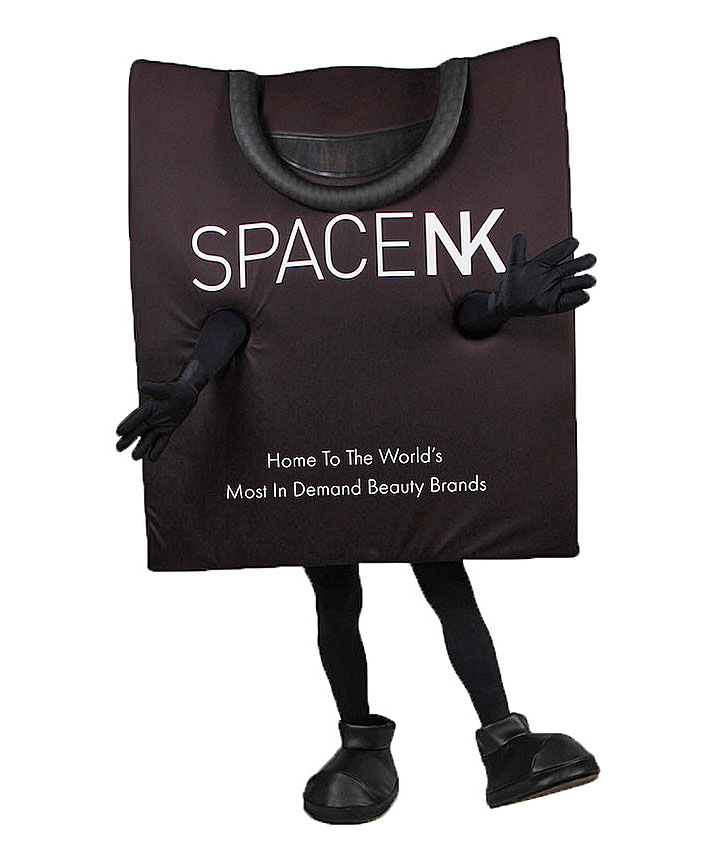
 “I wanted to take this opportunity to thank you for your ongoing service.
“I wanted to take this opportunity to thank you for your ongoing service. See video
See video

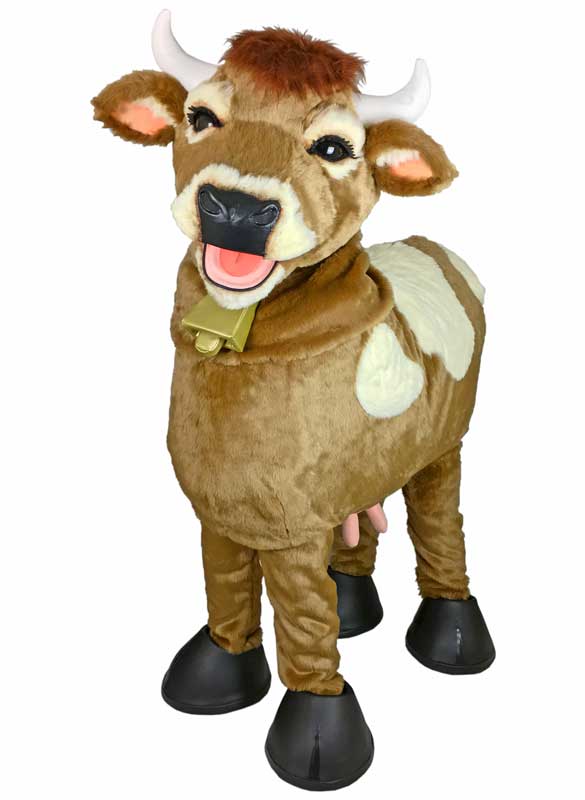 Each character we have ordered has been of incredible quality and detail and have been well received by everyone who sees them. All of the staff are incredibly helpful and a delight to work with and no doubt we will be using them as often as we can again in the future.”
Each character we have ordered has been of incredible quality and detail and have been well received by everyone who sees them. All of the staff are incredibly helpful and a delight to work with and no doubt we will be using them as often as we can again in the future.”
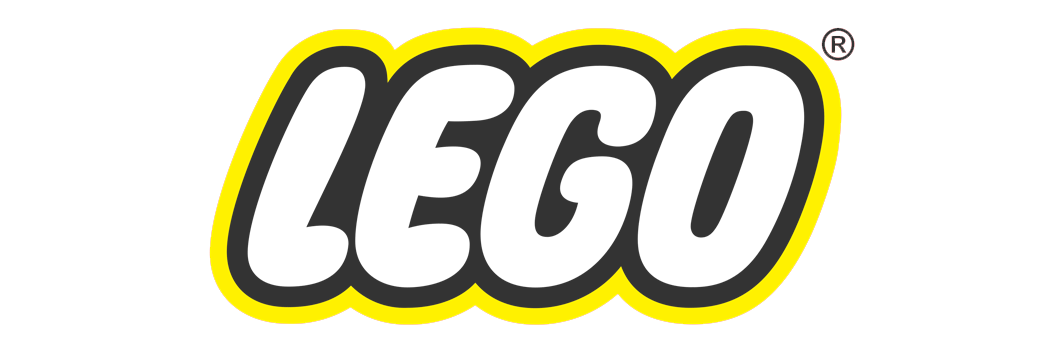 View costume
View costume View costume
View costume View costume
View costume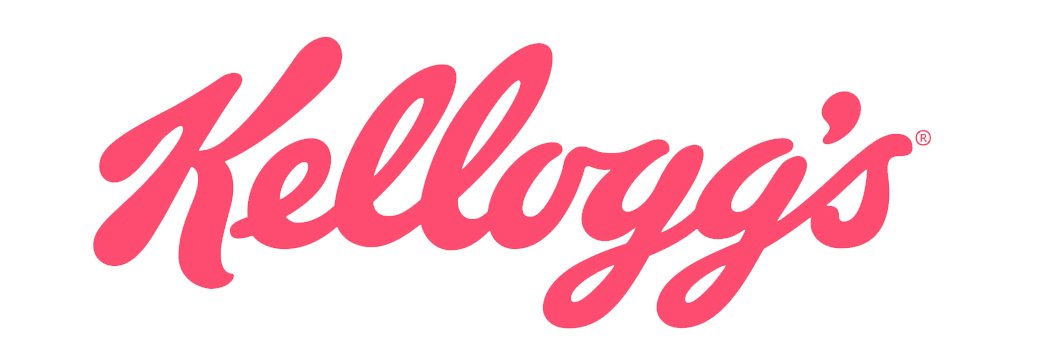 View costume
View costume View costume
View costume View costume
View costume View costume
View costume View costume
View costume